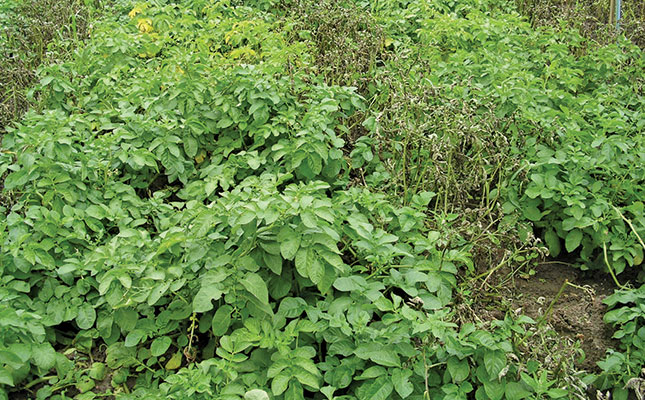
Potato blight is a serious disease that causes green and brown lesions on leaves, branches and tubers. The Irish Potato Famine between 1845 and 1852, which resulted in mass starvation, was caused by blight.
The speed with which the infection spreads and its impact on crops makes it the leading threat to six million tons of potatoes produced annually in the UK.
Dr Fienie Niederwieser, manager of research and development at Potatoes South Africa, said that although blight was uncommon in South Africa, there had been isolated, but severe, outbreaks of the disease.
However, he was unaware of widespread epidemics in the country due to its generally warm and dry climate.
“The disease is more likely to occur in KwaZulu-Natal and the Sandveld [due to the climate of these areas],” he said.
To lower the risk of outbreaks, farmers should plant only disease-free seed potatoes. “A single infected tuber can cause an epidemic,” he added.
The US department of agriculture has approved the potato, but scientists said that gaining regulatory approval in Europe would be a challenge.
The technology has been licensed to a US company that aims to grow the variety in that country.













